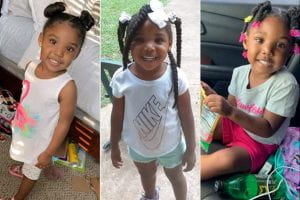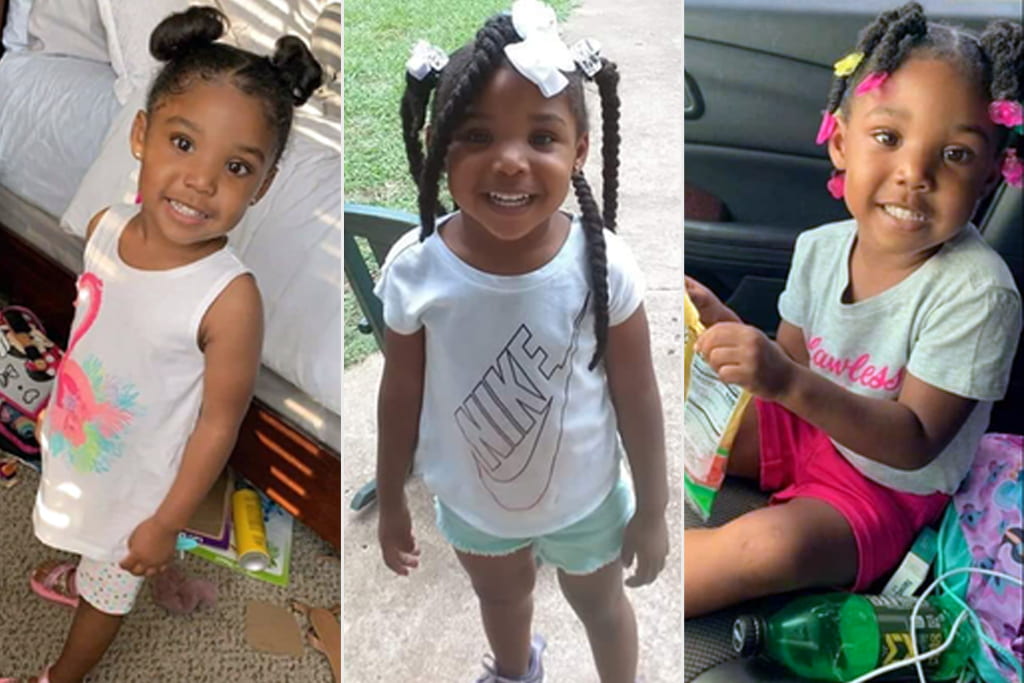
It breaks my heart to write about the tragedy of the three-year-old little girl Kamille “Cupcake” McKinney, fondly known as Cupcake, who was abducted from a birthday party about two weeks ago here in Birmingham, Alabama. AMBER alerts were issued across Alabama and extended into neighboring states in an effort to locate her. The Birmingham police department had been updating the public on the efforts, but unfortunately a day after Mayor Randall Woodfin pleaded with the public to help find her, the remains of the little angel were found in a dumpster at a landfill in Birmingham. This is indeed a sad moment for not only the family of Cupcake and the city of Birmingham, but also for humanity as a whole. We as a society have failed the little angel, and she is indeed in a better place than this cruel world. My heart goes out to her family as this is an irreparable loss for them that cannot be made up with any amount of sympathy. We hope they are able to find solace and healing with time.
Mayor Woodfin held a vigil for “Cupcake” outside of Birmingham City Hall, where hundreds of people gathered to honor her. They expressed sorrow and solidarity for the innocent soul “whose disappearance gripped the Birmingham area for 10 days and whose death shook the city to its core.” Birmingham police department, City Council, community activists, faith-based leaders and the general public stood with heavy hearts and teary eyes to pay tribute to baby Kamille. This was one of the many vigils held in the city after the devastating news of her death, including the spot where she was last seen in Tom Brown village. Birmingham Police Chief Patrick Smith expressed his grief over the incident and how his department endlessly worked in hopes of bringing the child safely back home. He had some powerful words to say:
“I believe Kamille changed this city. A 3-year-old little girl has changed the landscape of the city of Birmingham. She made us stop and check ourselves. Check ourselves to see if we’re doing everything we can to keep our children safe from harm. Check ourselves to see if we’re truly the village that we promise to be. Check ourselves to see if we’re living up to the expectations of tomorrow and watching over our children today.”
This incident has called for a reflection of ourselves and of our community. It has made us question the safety of our own children because little Cupcake was one of us. We need to evaluate if we really are the village that we strive to be or are we too segmented and disconnected as a community and a society? It makes us question how safe our neighborhoods and cities are? Do we assume that someone will always be there to step in and stop it? Are there any truly safe spaces? The answers are to be found.
To this date, two persons of interest have been charged with kidnapping and murder in relation to Kamille’s disappearance. A similar case surfaced in South Carolina when the body of a 5-year-old girl Nevaeh Adams, who was missing since August, was also found dumped in a landfill within 24 hours of this tragedy.
Missing children is a bigger crisis in the U.S. than most people think, and unfortunately Cupcake was one of many. A child goes missing every 40 seconds here in the United States. Last year alone, more than 400,000 reports of missing children were made to law enforcement in the US, out of which almost 15,000 were kidnapped. The most commonly abducted group was of female children aged 12-17.
It is notable to consider the amount of coverage Cupcake was able to get and the reward amounts offered for her retrieval. Unfortunately, this kind of effort is not always the case for missing children, especially for those of color. A study by Ohio State University found that missing African American children are in fact underrepresented in news media making it difficult to spread the word about them and to retrieve them. This itself is a violation of the Article 7 of the Universal Declaration of Human Rights, which states that all are equal before the law and are entitled without any discrimination to equal protection of the law. The Black and Missing Foundation, a non-profit striving to bring awareness to the missing persons of color, issued a report suggesting that one reason for the under-representation of missing minority people is the widespread belief that such people live in impoverished conditions with crime being a regular part of their lives. This mindset contributes to the factor of racial consideration in the coverage and efforts of finding missing persons.
Cases of people who go missing generally involve multiple abuses of human rights. For example, the Universal Declaration of Human Rights ensures the rights to life, liberty and security of person (Article 3) and that no one shall be subjected to torture or to cruel, inhuman or degrading treatment or punishment (Article 5). In a lot of cases, the right to life is also violated as in that of Cupcake and Nevaeh Adams. Additionally, the families of victims may face violation of human rights as well, such as the right to a family life. In case of the absence of official investigations, the families and survivors of the victims face the violation of their right to due process, to recognition of a person before the law, and even to the prohibition of torture. It is important to consider it as a human rights issue and the various ways in which the fundamental rights of the missing persons and their families are abused.
It is the responsibility of the state to ensure a safe environment for all its citizens and the community members to play their part in keeping it safe. In case of such unfortunate circumstances, the community seems to be limited to the aftermath and post-incident action. The states are under a legal obligation to conduct effective investigations for all missing persons and to guarantee that all abuses be officially investigated irrespective of the fact that whether or not those abuses are considered attributable to actions by the victim. International Humanitarian Law also obligates the search of the missing and complements the universal guarantees provided by human rights.
There are various reasons that a child can go missing. When children are kidnapped by strangers, it is often due to pedophilic motives and for sexual exploitation. Some kidnappings are also motivated by monetary reasons such as human trafficking, sex-trafficking, forced child labor, illegal adoption, or for ransom. These are generally well-organized illegal networks run nationally and internationally and are always on the lookout for potential target-children. A few rare cases also involve serious mental conditions or revengeful motives used for kidnapping, abducting, and hurting children. Parental abductions and runaways also constitute a large number of missing children, but the focus of this article are the abductions by strangers.
Now the question arises: What can we do on our part to prevent such unfortunate circumstances and to keep our children safe from predators in addition to actions taken by the authorities?
According to the American Academy of Pediatrics, most of these incidents happen when children tend to wander off without realizing the danger. Parents and guardians need to take necessary precautions to help keep their children safe by being more vigilant of their surroundings and ensuring a check on children. Some kids can be more curious, mischievous, and vulnerable than others. Parents need to ensure trustable adult supervision at all times, especially in crowded public places. While choosing daycares, schools, or camps for children, make sure that there are ample security measures and policies in place for kids’ safety. Adults also need to be very careful while hiring babysitters and should get necessary background checks and recommendations before letting someone be alone with their child. Additionally, children need to be educated and trained for potential crisis situations and ways to seek help. Train them to be mindful of strangers, encourage them to share any unusual happenings, and teach them about the resources and necessary actions when encountering an unusual situation. For children with special needs, parents and guardians should take extra precautions and make necessary arrangements for the safety of their children, as they might be more vulnerable than others.
Lastly, all of us need to stay alert of our surroundings and take active responsibility for helping authorities in our communities when AMBER alerts are issued for such cases. We can look out for people, vehicles, victims, or criminals as specified in the issued alert. We can help spread the word by sharing the information with others and volunteer to distribute posters of missing children. For specific cases, community members can conduct organized searches to help the police forces look for missing children. We should stay aware of our surroundings, report suspicious activities and people, safely intervene and help in situations to the best of our abilities, and know the community resources for taking appropriate action.
A number of resources are available for parents facing such an unfortunate situation of a missing child. In such an emergency, contact your local FBI field office or call the National Center for Missing and Exploited Children on 1-800-THE-LOST. The AMBER Alert program has also been credited with the safe recovery of 957 children to date and is a great way to get the word out in order to mobilize communities for the lookout. Parents are also encouraged to keep child safety kits which include all the necessary information like IDs, recent photos, physical characteristics, fingerprints, and other information about the child. These should always be kept intact to be used in potential emergency situations to assist the authorities in taking appropriate and immediate action.
We as a society need to re-evaluate ourselves, our values, commitments, priorities, actions, and safety in the light of these staggering realities and horrific instances. Little baby Cupcake will not come back to her family, but a lot of other children can find their ways back home through the joint efforts of authorities and community members. We all have to work together to make our communities safer for our precious children, who are the future of this world.

